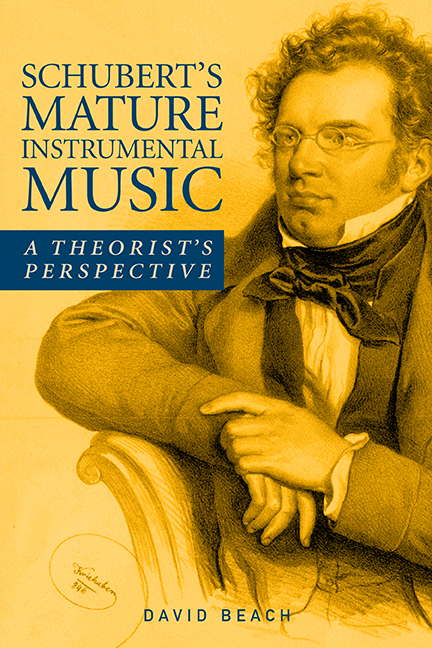8 - A Slow Movement and a Finale
Published online by Cambridge University Press: 10 June 2021
Summary
Second Movements
There is surprising variety in the formal schemes employed by Schubert in his second movements. Of the dozen or so I have examined in some detail, I note four distinct types, though the last two I will mention are clearly related. The first formal type is often referred to as sonatina form, a sonata form without a development section, in other words, a statement of ideas followed by a restatement. The three that fall into this category were written toward the beginning of Schubert's “mature” period: the second movements of the “Trout” Quintet, the Octet in F Major, and the Symphony in B Minor. The first of these is a prime example of Schubert's occasionally employed scheme of transposing the key relationships of the statement or exposition in the restatement or recapitulation such that it ends rather than begins on the tonic. This movement was mentioned briefly in chapter 4 in the section on “transposition schemes” (type 3). Like the second movement of the “Trout” Quintet, the second movement of the Octet presents three ideas. However, here the restatement begins in the tonic, which leads to IV, then V (via ♭VII) to I. This leads us to the second movement of the “Unfinished” Symphony, where the motion to IV in the restatement is the goal of a long-range progression by descending thirds, where IV is introduced by I (= V of IV): I–vi–IV–V–I. This movement was also mentioned in chapter 4, in this case under the section titled “a unifying progression” (type 5). The second type, variations, appears in three of the movements I have examined, the second movements of the Quartets in A Minor and D Minor, and the A-Minor Piano Sonata, D. 845. The third type, ternary form, is what I naturally associate with second movements. Four examples are the second movements of the Piano Trio in B-flat Major, the Piano Sonatas in A and B-flat Major, and the String Quintet. I will single out the slow movement of the B-flat Major Sonata for examination below. The final type is what I call extended or compound ternary: A B Aʹ Bʹ Aʺ.
- Type
- Chapter
- Information
- Schubert's Mature Instrumental MusicA Theorist's Perspective, pp. 174 - 195Publisher: Boydell & BrewerPrint publication year: 2017



